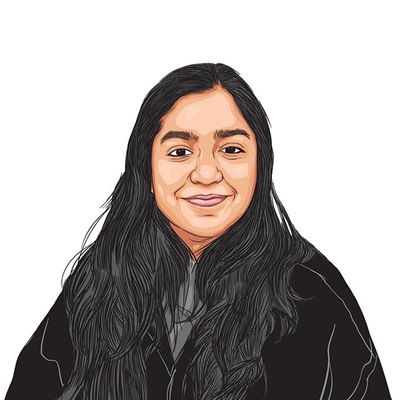Opinion View from Pakistan: Bangladesh polls and the state of democracy in South Asia
A new Covid crisis, bombings in Iran, PTI election symbol loss and political challenges for opposition in Bangladesh: A weekly wrap-up of the issues being discussed and debated in India’s neighbourhood
 Bangladesh is going to the polls to elect its new government that will be in-charge for the next five years. (PTI Photo)
Bangladesh is going to the polls to elect its new government that will be in-charge for the next five years. (PTI Photo) A new Covid crisis
With the re-emergence of Covid through the JN.1 sub-variant of the BA.2.86 omicron lineage and a foggy winter, the healthcare sector has another challenge on its hands. The media advocates for a robust framework to manage and track new cases and respiratory diseases to effectively control the spread.
Express Tribune (January 6) says, “In the context of Pakistan, where complaints of cough, fever, flu and sore throat abound in households, the absence of widespread Covid-19 testing complicates the situation. While Covid-19 testing remains mandated in some offices, the prevalence of positive cases suggests the need for continued vigilance.”
News International (January 4) comments on the role of the government in controlling spread so far saying, “the Pakistan government has taken timely decisions… to get over 500,000 doses of Pfizer’s new Covid-19 vaccine (2023-24 formula) this month, which will be used to vaccinate high-risk groups”.
Kerman bombing
On January 3, at a memorial event in Kerman for Qassem Soleimani — an Iranian general killed by the US in Baghdad in 2020 — the Islamic State (IS) terror group bombed the gathering twice, killing nearly 100 people in the Iranian city. According to the media, this has further complicated the Israel-Gaza conflict.
Dawn (January 6) comments on the Israel-IS connection saying, “Some Iranian commentators have gone as far as labelling IS a tool of Israel and the US to destabilise the region… Israeli intelligence officials have boasted they are active ‘from Gaza to Iran’… Regional states should also keep an eye on malign Israeli activities, as Tel Aviv seeks to sow chaos on foreign soil to divert attention from the massacre in Gaza.”
Express Tribune (January 5) points to another such strike as “the gravity of Kerman blasts reminded the revolutionary nation of a similar attack on its parliament way back after the 1979 revolution, which killed more than 72 legislators and maimed its sitting supreme leader Syed Ali Khamenei.” Before IS claimed responsibility, the editorial had deduced that while “it could be anyone behind Wednesday’s bombing such as the dreaded Islamic State or home-grown fissure… as it had a semblance with Soleimani, the plot widens to irresistibly include the Jewish state and Iran’s sworn adversary, the United States.”
An election in South Asia
Bangladesh is going to the polls today to elect its new government that will be in-charge for the next five years. Dawn (January 4) reflects on the political challenge for the Opposition Bangladesh Nationalist Party (BNP) and sheds light on the state of democracy in the South Asian region as Pakistan and India are also set to pick their next leaders in 2024.
The editorial says, “the crackdown on the Bangladesh Nationalist Party… has been relentless. The party’s workers and supporters have been picked up by the thousands, while many are in hiding, fearful that the security apparatus will scoop them up… Foreign governments as well as neutral observers, including UN officials, have raised concerns about the crackdown.”
On the question of democracy in South Asia, it observes, “The situation in Bangladesh is reflective of the larger threat to democracy in the region. We in Pakistan are, of course, familiar with the tactics being unleashed by the state in Bangladesh, and similar questions of legitimacy have been raised about our own electoral exercise next month. Meanwhile, India, which goes to the polls in a few months, is also suffering from a democratic deficit, as the BJP’s majoritarian Hindutva juggernaut has repeatedly mauled the secular democratic ethos in that country.”
No election symbol for Imran Khan-led PTI
Last December, the Election Commission of Pakistan announced that PTI’s intra-state polls were “illegal” and the party was stripped off its electoral symbol, a cricket bat. Initially, the Peshawar High Court granted a stay on the matter — but it soon reversed its stance, leaving PTI bereft of its symbol. The party has approached the Supreme Court to challenge the PHC’s decision, but it is a concerning development for the party since Pakistan is slated to go to the polls on February 8.
Daily Times (January 4) speaks from the perspective of PTI party seniors saying, “Tear-stained faces and shrieking visuals of exasperated leaders are enough to narrate their helplessness: without a unifying symbol, at least half a dozen candidates would claim to be the ‘chosen’ ticket holders in every constituency. An utter bedlam would ensue”.
News International (January 4) details the disaster for PTI adding “that even if the PTI is able to manage and let its voters know the election symbol of its official candidate(s) and these candidates eventually win seats due to PTI voters, they can still join any other political party after the elections… as they will be contesting as ‘independents’. This can essentially mean that it becomes all the easier for PTI candidates to switch loyalties after winning their seats on PTI votes.” These are, indeed, “difficult times” for PTI.






